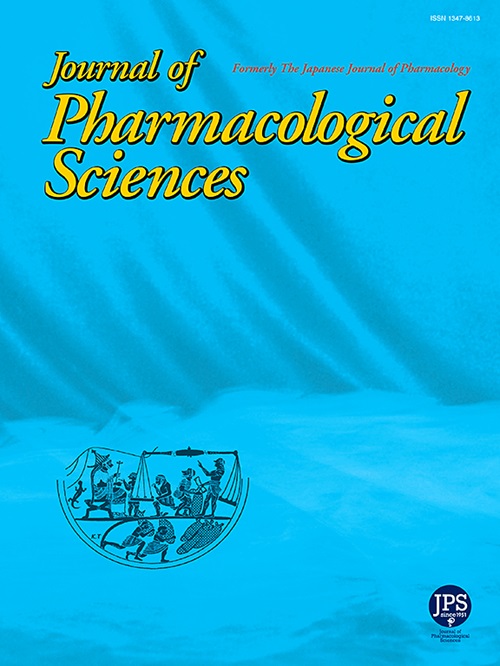银杏内酯B通过激活Nrf2信号通路抑制PC12细胞铁凋亡,改善脊髓损伤后的氧化应激
IF 2.9
3区 医学
Q2 PHARMACOLOGY & PHARMACY
引用次数: 0
摘要
脊髓损伤(SCI)通常导致运动和感觉功能丧失,造成巨大的社会经济负担,并引发许多继发性病理事件,包括氧化应激和铁下垂。本研究探讨了银杏内酯B (Ginkgolide B, GB)的治疗潜力,这是一种从银杏叶中提取的神经保护化合物,通过靶向铁下垂来减轻脊髓损伤。本研究通过erastin诱导的PC12细胞和大鼠挫伤性脊髓损伤模型,证明了GB显著改善运动恢复,减少神经元损失,减轻组织病理学损伤。在机制上,GB抑制铁下垂标志物,包括铁含量升高、脂质过氧化和ACSL4,同时恢复GPX4和xCT的表达。关键是,GB增强了Nrf2的核易位,上调了下游抗氧化剂和凋亡相关基因(HO-1和NQO1)。值得注意的是,在使用Nrf2信号抑制剂ML385后,GB的功能被取消,这表明GB在SCI恢复中的作用与Nrf2信号的激活高度相关。这些研究结果表明,GB通过Nrf2激活抑制铁下垂来减轻脊髓损伤,使其成为一种有前景的治疗剂。本研究阐明了Nrf2信号通路与脊髓损伤中铁下沉抑制的新机制,并为GB在脊髓损伤治疗中的重新利用提供了一个翻译框架。本文章由计算机程序翻译,如有差异,请以英文原文为准。
Ginkgolide B inhibits ferroptosis in PC12 cells and ameliorates the oxidative stress in spinal cord injury through activating Nrf2 signaling pathway
Spinal cord injury (SCI) commonly leads to loss of motor and sensory function and results in huge socioeconomic burden, and it triggers numerous secondary pathological events, including oxidative stress and ferroptosis. This study investigates the therapeutic potential of Ginkgolide B (GB), a neuroprotective compound derived from Ginkgo biloba, in mitigating SCI by targeting on ferroptosis. By using Erastin-induced ferroptosis in PC12 cells and a rat contusion SCI model, the present study demonstrated that GB significantly improved locomotor recovery, reduced neuronal loss, and attenuated histopathological damage. Mechanistically, GB suppressed ferroptosis markers, including elevated iron content, lipid peroxidation, and ACSL4, while restoring the expression of GPX4 and xCT. Crucially, GB enhanced nuclear translocation of Nrf2, upregulating downstream antioxidants and ferroptosis-related genes (HO-1 and NQO1). Notably, the functions of GB were abolished after utilization of Nrf2 signaling inhibitor ML385 which revealed the role of GB on recovery of SCI was highly related to the activation of Nrf2 signaling. These findings reveal that GB alleviates SCI by inhibiting ferroptosis through Nrf2 activation, positioning it as a promising therapeutic agent. This study elucidates a novel mechanism linking Nrf2 signaling to ferroptosis suppression in SCI and provides a translational framework for repurposing GB in SCI treatment.
求助全文
通过发布文献求助,成功后即可免费获取论文全文。
去求助
来源期刊
CiteScore
6.20
自引率
2.90%
发文量
104
审稿时长
31 days
期刊介绍:
Journal of Pharmacological Sciences (JPS) is an international open access journal intended for the advancement of pharmacological sciences in the world. The Journal welcomes submissions in all fields of experimental and clinical pharmacology, including neuroscience, and biochemical, cellular, and molecular pharmacology for publication as Reviews, Full Papers or Short Communications. Short Communications are short research article intended to provide novel and exciting pharmacological findings. Manuscripts concerning descriptive case reports, pharmacokinetic and pharmacodynamic studies without pharmacological mechanism and dose-response determinations are not acceptable and will be rejected without peer review. The ethnopharmacological studies are also out of the scope of this journal. Furthermore, JPS does not publish work on the actions of biological extracts unknown chemical composition.

 求助内容:
求助内容: 应助结果提醒方式:
应助结果提醒方式:


